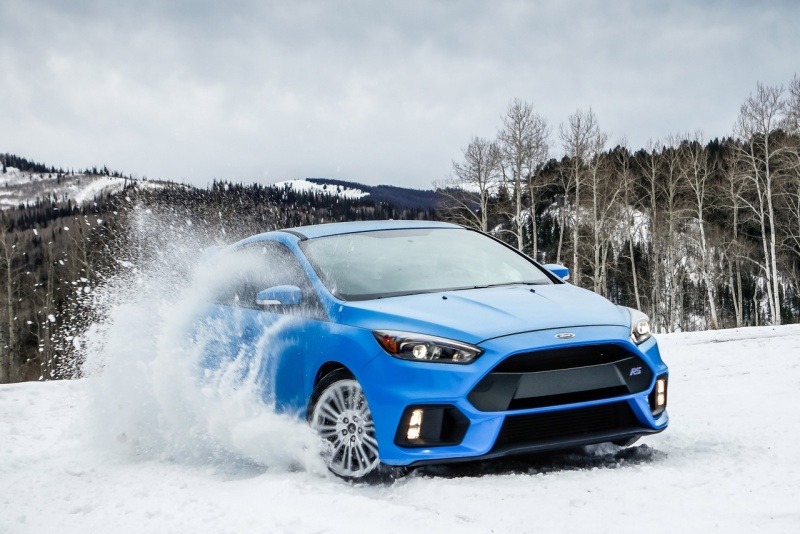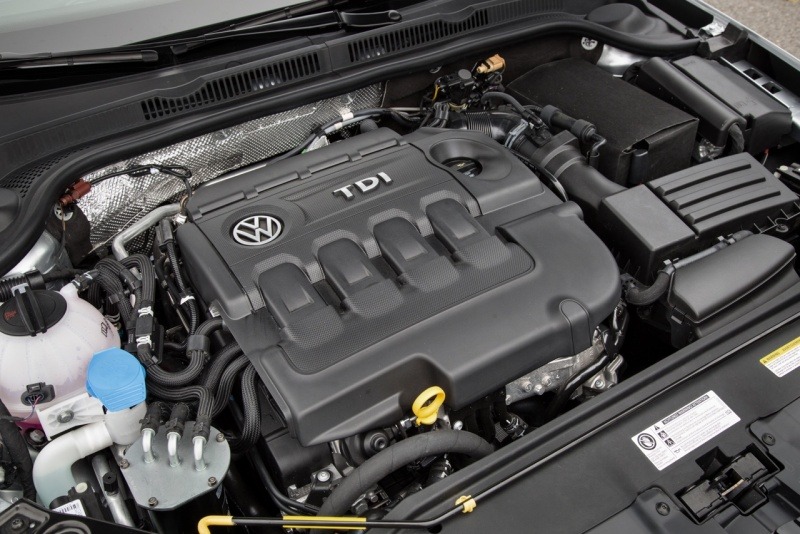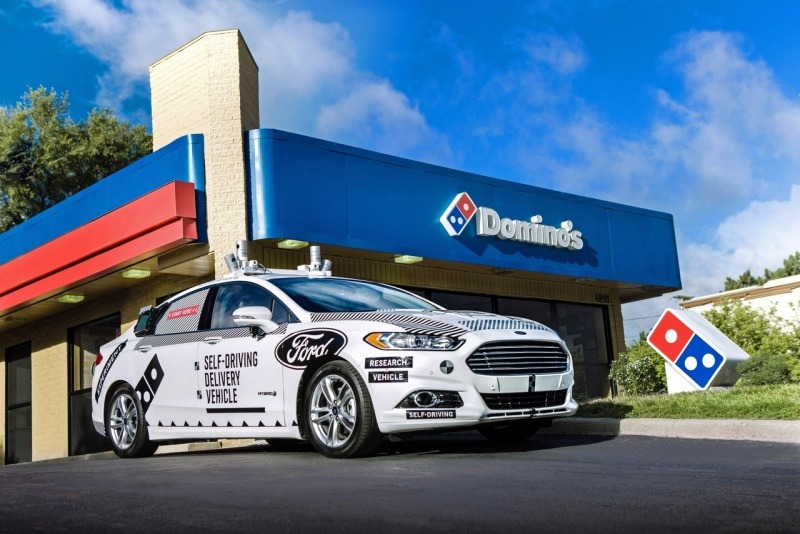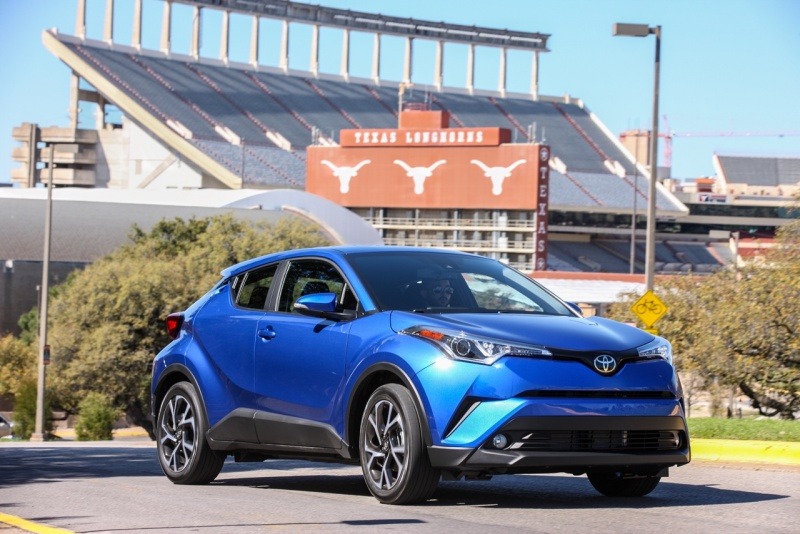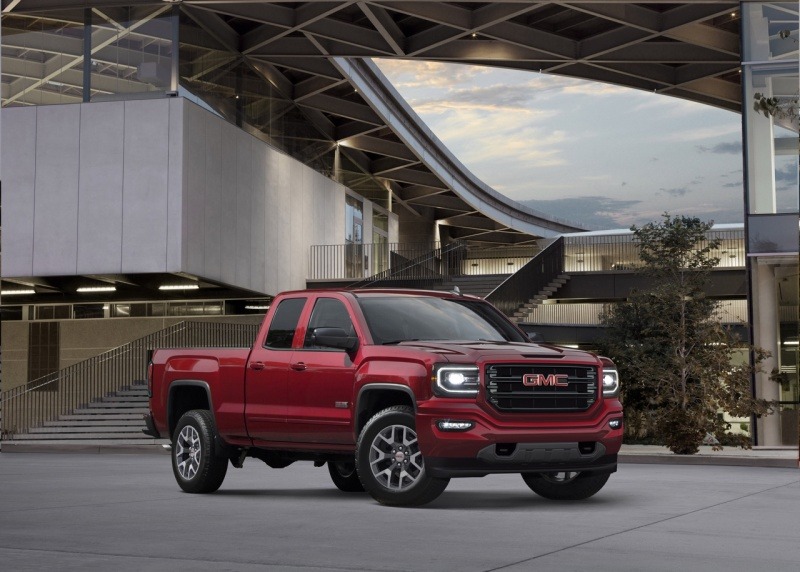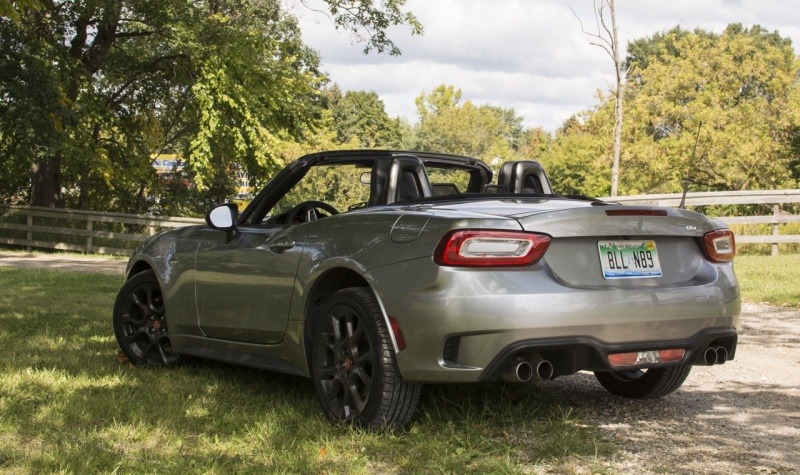-
Posts
32,884 -
Joined
-
Last visited
-
Days Won
5
Content Type
Forums
Articles
Garage
Gallery
Events
Store
Collections
Everything posted by William Maley
-
The Ford Focus RS is a serious hot hatch with a high-output version of the 2.3L EcoBoost and an all-wheel drive system featuring a 'drift mode'. But there is a serious issue that could make the RS not so hot. During the past year, numerous RS owners have been reporting of a plume of white smoke coming out of the tailpipe, a tell-tale sign of burning coolant and possibly a head-gasket failure. A Ford spokesman confirmed to Autocar this issue and said that it is affecting models from 2016 to 2017, and with mileage as low as 6,000 miles. The Ford spokesman said the company is “working on a repair for all customers,” hinting that a fix could be rolled out to models that are not currently affected. “In the meantime, if vehicles show these symptoms, customers should visit their dealer for an inspection and repair under warranty,” the spokesman said. No reason was given by Ford as to what the problem is, but the company has replaced several engines under warranty that are "built to the latest specification". The issue seems like a head-gasket failure, but that might not be the case. Members on the FocusRS.org forum speculate the issue comes from engine block distorting over multiple heat cycles. This creates an opening between the block and cylinder head that the gasket cannot seal, allowing coolant to enter and cause the aforementioned problems. Interestingly, the Mustang which uses the same 2.3L EcoBoost isn't affected by this problem. It uses a different alloy for its cylinder head and engine block than the Focus RS. Source: Autocar, FocusRS.org Forums View full article
-
- 2.3 ecoboost
- coolant burning
-
(and 2 more)
Tagged with:
-
The Ford Focus RS is a serious hot hatch with a high-output version of the 2.3L EcoBoost and an all-wheel drive system featuring a 'drift mode'. But there is a serious issue that could make the RS not so hot. During the past year, numerous RS owners have been reporting of a plume of white smoke coming out of the tailpipe, a tell-tale sign of burning coolant and possibly a head-gasket failure. A Ford spokesman confirmed to Autocar this issue and said that it is affecting models from 2016 to 2017, and with mileage as low as 6,000 miles. The Ford spokesman said the company is “working on a repair for all customers,” hinting that a fix could be rolled out to models that are not currently affected. “In the meantime, if vehicles show these symptoms, customers should visit their dealer for an inspection and repair under warranty,” the spokesman said. No reason was given by Ford as to what the problem is, but the company has replaced several engines under warranty that are "built to the latest specification". The issue seems like a head-gasket failure, but that might not be the case. Members on the FocusRS.org forum speculate the issue comes from engine block distorting over multiple heat cycles. This creates an opening between the block and cylinder head that the gasket cannot seal, allowing coolant to enter and cause the aforementioned problems. Interestingly, the Mustang which uses the same 2.3L EcoBoost isn't affected by this problem. It uses a different alloy for its cylinder head and engine block than the Focus RS. Source: Autocar, FocusRS.org Forums
-
- 2.3 ecoboost
- coolant burning
-
(and 2 more)
Tagged with:
-

Volkswagen CEO Says Maybe It Is Time To Cut Diesel Subsidies
William Maley posted an article in Volkswagen
Diesel is quite popular in Europe partly due to subsidies provided by governments - in this case, a lower tax rate on diesel fuel than gasoline. The thinking at the time was diesel engines burn their fuel more efficiently than gas engines, thus they contribute less to global warming. But as the Volkswagen diesel emission scandal would reveal, diesel vehicles aren't that much cleaner, producing more nitrogen oxide emissions than their gas counterparts. Now, one CEO from a German automaker is saying that maybe it is time to end the subsidies. “We should question the logic and purpose of diesel subsidies. The money can be invested more sensibly to promote more environmentally friendly technologies,” said Volkswagen CEO Matthias Müller to German paper Handelsblatt. This is quite the surprise as Volkswagen along with other German automakers said diesel still had a future due to new pollution reduction technologies. Also, Volkswagen did very well with the sales of diesel models. But with the dark cloud of the diesel emission scandal, Müller likely sees the writing on the wall and wants to get out ahead. Müller went on to say that he was in favor of banning older diesel vehicles from city centers. But he said that newer diesel vehicles should be exempt from the bans as they meet "stricter standards on nitrogen oxide emissions". Source: Handelsblatt via New York Times -
Diesel is quite popular in Europe partly due to subsidies provided by governments - in this case, a lower tax rate on diesel fuel than gasoline. The thinking at the time was diesel engines burn their fuel more efficiently than gas engines, thus they contribute less to global warming. But as the Volkswagen diesel emission scandal would reveal, diesel vehicles aren't that much cleaner, producing more nitrogen oxide emissions than their gas counterparts. Now, one CEO from a German automaker is saying that maybe it is time to end the subsidies. “We should question the logic and purpose of diesel subsidies. The money can be invested more sensibly to promote more environmentally friendly technologies,” said Volkswagen CEO Matthias Müller to German paper Handelsblatt. This is quite the surprise as Volkswagen along with other German automakers said diesel still had a future due to new pollution reduction technologies. Also, Volkswagen did very well with the sales of diesel models. But with the dark cloud of the diesel emission scandal, Müller likely sees the writing on the wall and wants to get out ahead. Müller went on to say that he was in favor of banning older diesel vehicles from city centers. But he said that newer diesel vehicles should be exempt from the bans as they meet "stricter standards on nitrogen oxide emissions". Source: Handelsblatt via New York Times View full article
-
When Subaru launched their new modular global platform in the Impreza, they said the platform was designed to accept different powertrains such as hybrid and electric. According to a report from Autocar, Subaru's first electric model is just around the corner. Subaru's chief designer, Mamoru Ishii told the outlet that the electric vehicle would be a variant of one of their current models and will launch in 2020. “Subaru cars are designed to support people’s lifestyles, so it should not be a case of designing the car for the powertrain. If customers want change we’ll respond - our cars are about customers loving using them how they are designed - but we are not going to change our design focus just to highlight a new way of powering the car,” said Ishii. Ishii declined to say how far Subaru is in development of the EV, but sources tell Autocar that crash tests have started to determine if the battery location is safe. If we were to guess what model Subaru is using for their electric vehicle, the Impreza seems like a safe bet. Source: Autocar
- 3 comments
-
- 2020
- electric vehicle
-
(and 3 more)
Tagged with:
-
When Subaru launched their new modular global platform in the Impreza, they said the platform was designed to accept different powertrains such as hybrid and electric. According to a report from Autocar, Subaru's first electric model is just around the corner. Subaru's chief designer, Mamoru Ishii told the outlet that the electric vehicle would be a variant of one of their current models and will launch in 2020. “Subaru cars are designed to support people’s lifestyles, so it should not be a case of designing the car for the powertrain. If customers want change we’ll respond - our cars are about customers loving using them how they are designed - but we are not going to change our design focus just to highlight a new way of powering the car,” said Ishii. Ishii declined to say how far Subaru is in development of the EV, but sources tell Autocar that crash tests have started to determine if the battery location is safe. If we were to guess what model Subaru is using for their electric vehicle, the Impreza seems like a safe bet. Source: Autocar View full article
- 3 replies
-
- 2020
- electric vehicle
-
(and 3 more)
Tagged with:
-
I think you missed a key competitor for the Subaru Ascent: A pack of cute dogs.
- 10 replies
-
- 2
-

-
- 2017
- la auto show
-
(and 1 more)
Tagged with:
-
Ford and General Motors have differing views on autonomous vehicles. GM is planning on launching a number of Chevrolet Bolt EVs in various urban markets in 2019 for a ride-hailing service. Ford, on the other hand, is taking a different approach in terms of powertrain and use. Ford's top sales executive, Jim Farley said their autonomous vehicle - due in 2021 - will be a hybrid vehicle with a focus on commercial applications. Farley explained that going with a hybrid powertrain would allow their vehicles to stay on the road longer thanks to a longer range when compared to EVs. The company expects their autonomous vehicles to be on the road for roughly 20 hours a day. Using an electric vehicle for this type of task doesn't make business sense as they would need to recharge constantly. "Anytime you're not carrying goods and people, you're losing money. The most important thing is uptime and profitability. What we see is the [hybrid] is a much better cost-of-ownership model," said Farley. The constant recharging also brings up another negative for electric vehicles, frequent replacement of the batteries due to increased degradation. Ford has already announced a pilot program with Domino's pizza to do deliveries in a self-driving plan. Next year, Ford will this commercial idea to the test by putting a fleet of vehicles in a "yet-to-be-named test city" with a number of partners. Source: Automotive News (Subscription Required) View full article
-
- commerical applications
- electric
-
(and 4 more)
Tagged with:
-
Ford and General Motors have differing views on autonomous vehicles. GM is planning on launching a number of Chevrolet Bolt EVs in various urban markets in 2019 for a ride-hailing service. Ford, on the other hand, is taking a different approach in terms of powertrain and use. Ford's top sales executive, Jim Farley said their autonomous vehicle - due in 2021 - will be a hybrid vehicle with a focus on commercial applications. Farley explained that going with a hybrid powertrain would allow their vehicles to stay on the road longer thanks to a longer range when compared to EVs. The company expects their autonomous vehicles to be on the road for roughly 20 hours a day. Using an electric vehicle for this type of task doesn't make business sense as they would need to recharge constantly. "Anytime you're not carrying goods and people, you're losing money. The most important thing is uptime and profitability. What we see is the [hybrid] is a much better cost-of-ownership model," said Farley. The constant recharging also brings up another negative for electric vehicles, frequent replacement of the batteries due to increased degradation. Ford has already announced a pilot program with Domino's pizza to do deliveries in a self-driving plan. Next year, Ford will this commercial idea to the test by putting a fleet of vehicles in a "yet-to-be-named test city" with a number of partners. Source: Automotive News (Subscription Required)
-
- commerical applications
- electric
-
(and 4 more)
Tagged with:
-
Toyota's polarizing C-HR crossover went on sale earlier this year and it isn't doing so well in terms of sales. Through November, Toyota has only moved 21,889 units, way less than Chevrolet Trax (72,723 units) and Honda HR-V (86,491). Speaking to Wards Auto, Toyota Motor Sales USA's president Bob Carter said a key reason the comes down to the C-HR not offering all-wheel drive in North America. Most subcompact crossovers sold in the U.S. have the option of AWD. But if Toyota was to AWD to the C-HR, it would highlight another problem. The C-HR carries a base price of $22,500, making it one of the more expensive models in the class. The C-HR isn't the only crossover that will only come front-wheel drive. Nissan's upcoming Kicks crossover will also be FWD only. However, Michael Bunce, senior vice president-product planning for Nissan North America tells Wards that only offering FWD on the Kicks shouldn't dent sales due to the low price of under $19,000. Those who want AWD will need to step up to the Rogue Sport which begins at $22,470 for the base S AWD. Source: Wards Auto View full article
- 14 replies
-
- all wheel drive
- awd
- (and 5 more)
-
Toyota's polarizing C-HR crossover went on sale earlier this year and it isn't doing so well in terms of sales. Through November, Toyota has only moved 21,889 units, way less than Chevrolet Trax (72,723 units) and Honda HR-V (86,491). Speaking to Wards Auto, Toyota Motor Sales USA's president Bob Carter said a key reason the comes down to the C-HR not offering all-wheel drive in North America. Most subcompact crossovers sold in the U.S. have the option of AWD. But if Toyota was to AWD to the C-HR, it would highlight another problem. The C-HR carries a base price of $22,500, making it one of the more expensive models in the class. The C-HR isn't the only crossover that will only come front-wheel drive. Nissan's upcoming Kicks crossover will also be FWD only. However, Michael Bunce, senior vice president-product planning for Nissan North America tells Wards that only offering FWD on the Kicks shouldn't dent sales due to the low price of under $19,000. Those who want AWD will need to step up to the Rogue Sport which begins at $22,470 for the base S AWD. Source: Wards Auto
- 14 comments
-
- all wheel drive
- awd
- (and 5 more)
-
General Motors had a field day when Ford switched from metal to aluminum for their truck beds. The company ran a series of ads showing how their metal beds could stand up to the rigors of a pickup truck's life compared to the Ford's. So it seems slightly ironic that GM is planning to use a lightweight material for their next-generation truck beds. The Wall Street Journal and Automotive News have learned from sources that GM is planning to use carbon fiber in their full-size pickup beds. According to one source, carbon fiber will be part of a mix of different materials, including aluminum. The move makes sense as stricter fuel economy regulations come into effect. Finding ways to cut down on weight is a good way to boost fuel economy. There is a big issue with carbon fiber, price. The material is very expensive to produce due to the long, labor-intensive process. The Journal reports that at first, the beds would be used on the premium versions of the trucks (High Country and Denali). It would trickle down to lower trims as "more efficient production processes" come online. The new beds are expected to debut within the next two years. Source: Automotive News (Subscription Required), Wall Street Journal (Subscription Required) View full article
- 8 replies
-
- beds
- carbon fiber
-
(and 6 more)
Tagged with:
-
General Motors had a field day when Ford switched from metal to aluminum for their truck beds. The company ran a series of ads showing how their metal beds could stand up to the rigors of a pickup truck's life compared to the Ford's. So it seems slightly ironic that GM is planning to use a lightweight material for their next-generation truck beds. The Wall Street Journal and Automotive News have learned from sources that GM is planning to use carbon fiber in their full-size pickup beds. According to one source, carbon fiber will be part of a mix of different materials, including aluminum. The move makes sense as stricter fuel economy regulations come into effect. Finding ways to cut down on weight is a good way to boost fuel economy. There is a big issue with carbon fiber, price. The material is very expensive to produce due to the long, labor-intensive process. The Journal reports that at first, the beds would be used on the premium versions of the trucks (High Country and Denali). It would trickle down to lower trims as "more efficient production processes" come online. The new beds are expected to debut within the next two years. Source: Automotive News (Subscription Required), Wall Street Journal (Subscription Required)
- 8 comments
-
- beds
- carbon fiber
-
(and 6 more)
Tagged with:
-
Ever since Mazda launched the MX-5 Miata back in 1989, competitors have been trying their best to out-maneuver it.; whether that is through better design, handling, or more power. While all have come and gone, while the Miata is still kicking around. What do you do in this case? If you can't beat them, join 'em. That's the case with Fiat as a few years ago, they would take the place of Alfa Romeo of developing a new roadster using the Miata as a base. The end result is the 124 Spider. Fiat’s designers wanted to do a modern interpretation of the 124 Spider designed by the legendary Pininfarina design house. The problem was trying to get that design to work with the MX-5 Miata’s structure. To pull this off, designers would add five inches to the overall length of the 124 Spider. The front end features many of the design touches found on the original 124 Spider with teardrop headlights, trapezoidal grille, raised fenders, and twin-power bulges on the hood. Around back is where the design begins to fall apart. The overall shape and certain choices such as the overhanging trunk lid don't fully mesh with the front. It looks like Fiat had two design teams working on either end of the vehicle, but put a curtain between them so they couldn’t see what the other was doing. The Abarth version of the 124 Spider does get some special touches to help it stand out from the other trims. They include a darker grille opening, 17-inch alloy wheels finished in a dark gray, and a quad-tip exhaust system. The only item we would change is making the Abarth badges smaller. The large size really detracts from the iconic look Fiat is trying go for. Putting the soft top down in the 124 Spider is very easy. Simply unlatch the mechanism holding the top in place and fold it back into its little storage space. Raising the top is just as painless as you just need to pull a latch behind the seats and pull the top forward. It will only take a few tries before you’re able to put the top up and down in just a few seconds. Moving inside, the only real differences between the 124 Spider and MX-5 Miata are the Fiat badge on the steering wheel, different fonts used for the gauges, and soft-touch plastics on the top of the door panels. Otherwise, the 124 Spider features the same layout and quirks of its donor vehicle. Controls readily fall to hand for either driver or passenger. Abarth models come with a 7-inch touchscreen with the Mazda Connect infotainment as standard equipment. On the plus side, Mazda Connect is easy to grasp thanks to an intuitive interface and a simple control knob. Downsides include the lack of Apple CarPlay and Android Auto;, and the awkward placement of the control knob. It will get in the way whenever you are shifting gears with either transmission. Snug is the keyword when describing the experience of sitting inside the 124 Spider. I’m 5’ 8” and had to set the driver’s seat almost all the way back to not feel cramped. Once I was able to find the right seat and steering positions, it felt like I was a part of the vehicle and not sitting on top of it. The passenger will complain about the lack of legroom as the transmission tunnel protrudes into the footwell. The seats themselves provide excellent support and will hold you in during an enthusiastic drive. The motivation for the 124 Spider is provided by Fiat’s turbocharged 1.4L MultiAir four-cylinder. The Abarth produces 164 horsepower and 184 pound-feet of torque. The base Classica and up-level Lusso see a small decrease in horsepower to 160. The difference comes down to the Abarth featuring a different exhaust system. Our tester featured the optional six-speed automatic with steering wheel paddles. A six-speed manual comes standard. Although the 124 Spider has higher power figures than the Miata, it isn’t that much faster. Reviewers who have run 0-60 tests say the Miata does it under six seconds, while the 124 Spider takes over six seconds. There are two reasons for this: First, the Miata is lighter than the 124 Spider by an average of about 120 pounds. Second is the engine has a bad case of turbo lag. The turbo doesn’t fully spool up until about 2,000 to 2,500 rpm, leaving you wondering where all of this power is when leaving a stop. Once it’s going, power is delivered in a smooth and somewhat linear fashion. The automatic transmission is another weak point of this powertrain. It loves to upshift early and leaves you without any turbo boost. This can be rectified by using the paddles on the steering wheel or throwing the automatic into the manual shift mode. The manual transmission is the better choice as it allows more flexibility with the engine. EPA fuel economy figures for the 124 Spider stand at 25 City/36 Highway/29 Combined. Our average for the week landed around 28 MPG. If there is one place that the 124 Spider Abarth can give the MX-5 Miata a run for its money, it is in the handling. The Abarth feels more athletic and confident when entering a corner with little body roll and fast transitions thanks to a sport-tuned suspension. Steering is the same as Miata with excellent road feel and quick turning. The downside to the athletic handling is a very stiff ride. Road imperfections are directly transmitted to those sitting inside. There is also an abundance of wind and road noise coming inside the 124 Spider. In some ways, the 124 Spider is better than the MX-5 Miata. The Abarth provides crisper handling and the interior is slightly nicer than what you’ll find in the Miata. But in other areas, the Miata is the better vehicle. The turbo lag from the turbocharged 1.4L saps a bit of the fun out of the vehicle and the design is somewhat unflattering. We can understand why someone would pick the 124 Spider Abarth over the Miata as it is something different. But is it the better Miata? The answer is no. Disclaimer: Fiat Provided the 124 Spider, Insurance, and One Tank of Gas Year: 2017 Make: Fiat Model: 124 Spider Trim: Abarth Engine: Turbocharged 1.4L MultiAir Inline-Four Driveline: Six-Speed Automatic, Rear-Wheel Drive Horsepower @ RPM: 164 @ 5,500 Torque @ RPM: 184 @ 3,200 Fuel Economy: City/Highway/Combined - 25/36/29 Curb Weight: 2,516 lbs Location of Manufacture: Hiroshima, Japan Base Price: $28,195 As Tested Price: $30,540 (Includes $995.00 Destination Charge) Options: 6-Speed AISIN Automatic RWD Transmission - $1,350.00 View full article
- 39 replies
-
- 124 spider
- 2017
-
(and 4 more)
Tagged with:
-
Ever since Mazda launched the MX-5 Miata back in 1989, competitors have been trying their best to out-maneuver it.; whether that is through better design, handling, or more power. While all have come and gone, while the Miata is still kicking around. What do you do in this case? If you can't beat them, join 'em. That's the case with Fiat as a few years ago, they would take the place of Alfa Romeo of developing a new roadster using the Miata as a base. The end result is the 124 Spider. Fiat’s designers wanted to do a modern interpretation of the 124 Spider designed by the legendary Pininfarina design house. The problem was trying to get that design to work with the MX-5 Miata’s structure. To pull this off, designers would add five inches to the overall length of the 124 Spider. The front end features many of the design touches found on the original 124 Spider with teardrop headlights, trapezoidal grille, raised fenders, and twin-power bulges on the hood. Around back is where the design begins to fall apart. The overall shape and certain choices such as the overhanging trunk lid don't fully mesh with the front. It looks like Fiat had two design teams working on either end of the vehicle, but put a curtain between them so they couldn’t see what the other was doing. The Abarth version of the 124 Spider does get some special touches to help it stand out from the other trims. They include a darker grille opening, 17-inch alloy wheels finished in a dark gray, and a quad-tip exhaust system. The only item we would change is making the Abarth badges smaller. The large size really detracts from the iconic look Fiat is trying go for. Putting the soft top down in the 124 Spider is very easy. Simply unlatch the mechanism holding the top in place and fold it back into its little storage space. Raising the top is just as painless as you just need to pull a latch behind the seats and pull the top forward. It will only take a few tries before you’re able to put the top up and down in just a few seconds. Moving inside, the only real differences between the 124 Spider and MX-5 Miata are the Fiat badge on the steering wheel, different fonts used for the gauges, and soft-touch plastics on the top of the door panels. Otherwise, the 124 Spider features the same layout and quirks of its donor vehicle. Controls readily fall to hand for either driver or passenger. Abarth models come with a 7-inch touchscreen with the Mazda Connect infotainment as standard equipment. On the plus side, Mazda Connect is easy to grasp thanks to an intuitive interface and a simple control knob. Downsides include the lack of Apple CarPlay and Android Auto;, and the awkward placement of the control knob. It will get in the way whenever you are shifting gears with either transmission. Snug is the keyword when describing the experience of sitting inside the 124 Spider. I’m 5’ 8” and had to set the driver’s seat almost all the way back to not feel cramped. Once I was able to find the right seat and steering positions, it felt like I was a part of the vehicle and not sitting on top of it. The passenger will complain about the lack of legroom as the transmission tunnel protrudes into the footwell. The seats themselves provide excellent support and will hold you in during an enthusiastic drive. The motivation for the 124 Spider is provided by Fiat’s turbocharged 1.4L MultiAir four-cylinder. The Abarth produces 164 horsepower and 184 pound-feet of torque. The base Classica and up-level Lusso see a small decrease in horsepower to 160. The difference comes down to the Abarth featuring a different exhaust system. Our tester featured the optional six-speed automatic with steering wheel paddles. A six-speed manual comes standard. Although the 124 Spider has higher power figures than the Miata, it isn’t that much faster. Reviewers who have run 0-60 tests say the Miata does it under six seconds, while the 124 Spider takes over six seconds. There are two reasons for this: First, the Miata is lighter than the 124 Spider by an average of about 120 pounds. Second is the engine has a bad case of turbo lag. The turbo doesn’t fully spool up until about 2,000 to 2,500 rpm, leaving you wondering where all of this power is when leaving a stop. Once it’s going, power is delivered in a smooth and somewhat linear fashion. The automatic transmission is another weak point of this powertrain. It loves to upshift early and leaves you without any turbo boost. This can be rectified by using the paddles on the steering wheel or throwing the automatic into the manual shift mode. The manual transmission is the better choice as it allows more flexibility with the engine. EPA fuel economy figures for the 124 Spider stand at 25 City/36 Highway/29 Combined. Our average for the week landed around 28 MPG. If there is one place that the 124 Spider Abarth can give the MX-5 Miata a run for its money, it is in the handling. The Abarth feels more athletic and confident when entering a corner with little body roll and fast transitions thanks to a sport-tuned suspension. Steering is the same as Miata with excellent road feel and quick turning. The downside to the athletic handling is a very stiff ride. Road imperfections are directly transmitted to those sitting inside. There is also an abundance of wind and road noise coming inside the 124 Spider. In some ways, the 124 Spider is better than the MX-5 Miata. The Abarth provides crisper handling and the interior is slightly nicer than what you’ll find in the Miata. But in other areas, the Miata is the better vehicle. The turbo lag from the turbocharged 1.4L saps a bit of the fun out of the vehicle and the design is somewhat unflattering. We can understand why someone would pick the 124 Spider Abarth over the Miata as it is something different. But is it the better Miata? The answer is no. Disclaimer: Fiat Provided the 124 Spider, Insurance, and One Tank of Gas Year: 2017 Make: Fiat Model: 124 Spider Trim: Abarth Engine: Turbocharged 1.4L MultiAir Inline-Four Driveline: Six-Speed Automatic, Rear-Wheel Drive Horsepower @ RPM: 164 @ 5,500 Torque @ RPM: 184 @ 3,200 Fuel Economy: City/Highway/Combined - 25/36/29 Curb Weight: 2,516 lbs Location of Manufacture: Hiroshima, Japan Base Price: $28,195 As Tested Price: $30,540 (Includes $995.00 Destination Charge) Options: 6-Speed AISIN Automatic RWD Transmission - $1,350.00
- 39 comments
-
- 124 spider
- 2017
-
(and 4 more)
Tagged with:
-

Review: 2017 Fiat 124 Spider Abarth
Images added to a gallery album owned by William Maley in Gallery
-
From the album: Review: 2017 Fiat 124 Spider Abarth
-
From the album: Review: 2017 Fiat 124 Spider Abarth
-
From the album: Review: 2017 Fiat 124 Spider Abarth
-
From the album: Review: 2017 Fiat 124 Spider Abarth
-
From the album: Review: 2017 Fiat 124 Spider Abarth
-
From the album: Review: 2017 Fiat 124 Spider Abarth
-
From the album: Review: 2017 Fiat 124 Spider Abarth
-
From the album: Review: 2017 Fiat 124 Spider Abarth
-
From the album: Review: 2017 Fiat 124 Spider Abarth



